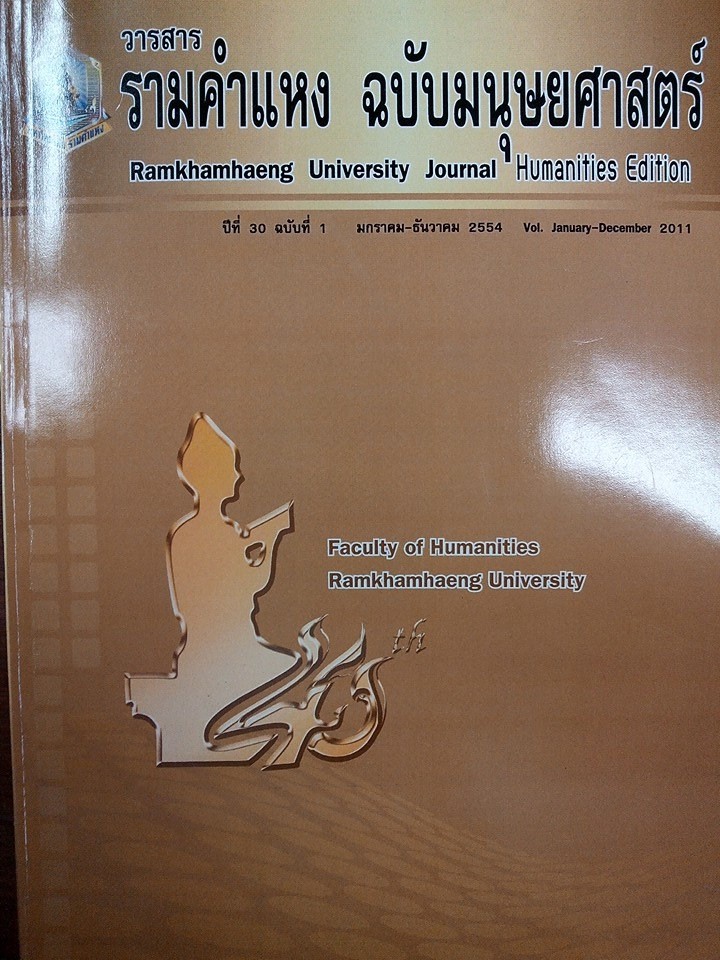A Study of Figurative Language Used in the Composition of National Anthems การศึกษาภาษาภาพพจน์ในเพลงชาติ
Main Article Content
บทคัดย่อ
Abstract
This qualitative study aims to (1) identify and classify types of figurative language existing in national anthems and (2) study how figurative language in national anthems conveys meanings to the audience. Twenty four pieces of national anthems in English officially established after 1950 have been researched. To examine the figurative language and its role, the study was designed as a qualitative study with descriptive and interpretative methods of data analysis (Berg, 2004; Coffey & Atkinson, 1996; Strauss & Corbin, 1998).
The findings revealed that, first, eleven types of figurative language were applied including repetition, alliteration, synecdoche, metonymy, symbol, apostrophe, personification, metaphor, simile, allusion, and hyperbaton. Second, three main themes expressed in the national anthems through the use of figurative language can be classified as the admiration of the institution, the strength of the people, and the pride of a nation. In addition, figurative language is used as the effective tool to make a connection of culture and norms between the lyricist and the audience of a particular nation. As a result, the mood of 6unity7 in the anthem can be created among people in a nation including mutual attitude, social value, and tradition that make all diverse types of audiences become one. To conclude, figurative language can highlight the intended meanings in its message to the audience. Particularly, figurative language can simply be seen when going beyond the denotation of words. Thus, the audience perceives the real message and understands the connotation of lyric in national anthems.
Article Details

อนุญาตภายใต้เงื่อนไข Creative Commons Attribution-NonCommercial-NoDerivatives 4.0 International License.
ประกาศลิขสิทธิ์จะปรากฏในเกี่ยวกับวารสาร ควรอธิบายสำหรับผู้อ่านและผู้เขียนว่าเจ้าของลิขสิทธิ์เป็นผู้เขียนวารสารหรือบุคคลที่สาม ควรรวมถึงข้อตกลงการอนุญาตเพิ่มเติม (เช่นใบอนุญาตครีเอทีฟคอมมอนส์) ที่ให้สิทธิ์แก่ผู้อ่าน (ดูตัวอย่าง) และควรให้วิธีการรักษาความปลอดภัยหากจำเป็นสำหรับการใช้เนื้อหาของวารสาร


